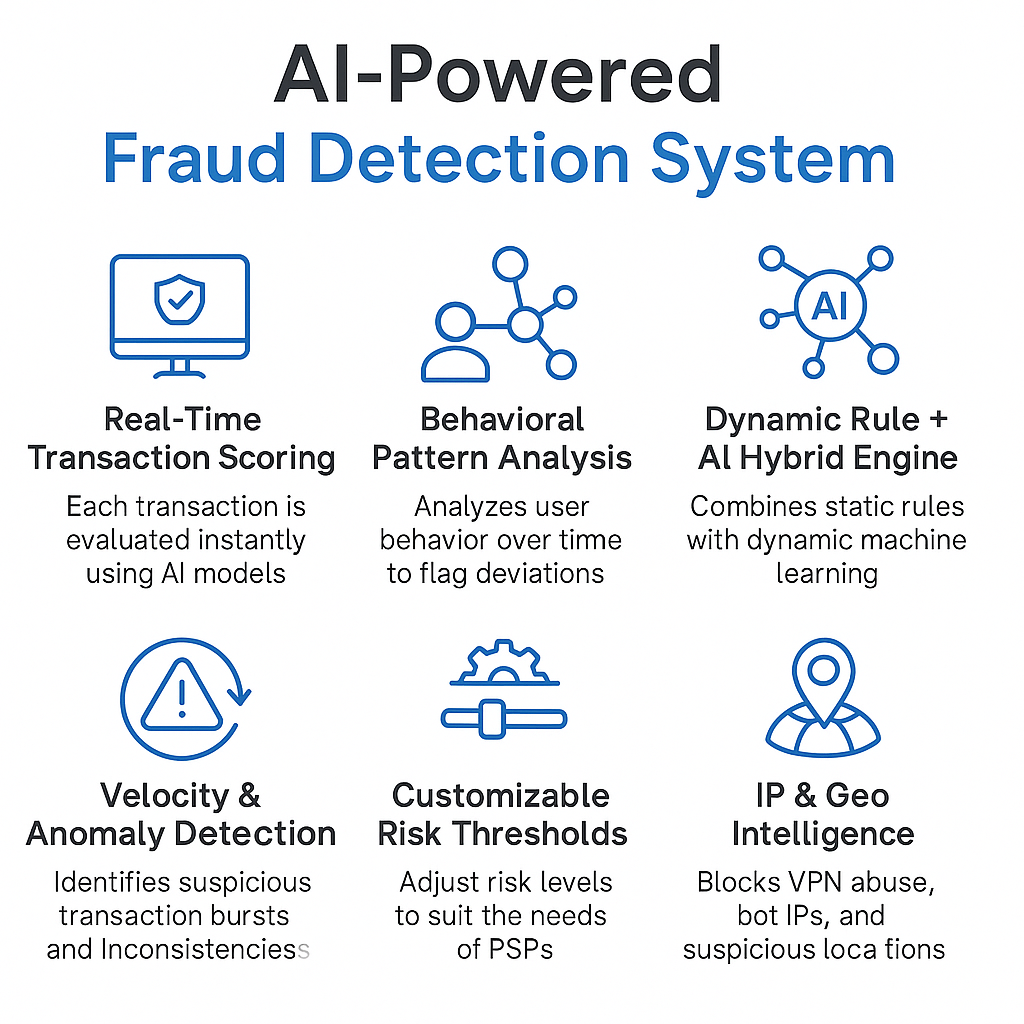Introduction
As digital transactions become the norm, fraudsters are evolving just as fast. Traditional fraud detection methods—mostly static rule-based engines—are not equipped to handle modern payment dynamics. Let’s build a scalable, intelligent AI-based fraud detection system designed specifically for Payment Service Providers (PSPs).
Limitations of Traditional Rule-Based Systems
- Hard-coded thresholds are easy to bypass
- High false positives lead to poor user experience
- No ability to learn from new fraud patterns
Why AI is the Game Changer
AI can learn patterns, behaviors, and anomalies dynamically—resulting in higher detection rates with fewer false alarms.
- Detects complex, hidden fraud patterns
- Real-time scoring of each transaction
- Continuously improves via feedback loops
How We Structure Our AI Fraud Detection Model
1. Data Collection Layer
We collect diverse signals from:
- Transaction Data: amount, time, currency, channel
- Behavioral Data: device changes, login times, velocity
- Geo & Device Data: IP address, GPS, OS fingerprint
- Merchant Risk Profiles: category, chargeback history
2. Feature Engineering Layer
We transform raw data into features like:
- Time since last transaction
- Deviation from usual location/device
- Merchant-level fraud frequency
3. Machine Learning Modeling Layer
Our stack includes:
- XGBoost & Random Forest for high accuracy
- Isolation Forests for anomaly detection
- Neural Networks for complex fraud patterns
4. Real-Time Risk Scoring
Every transaction is scored 0–100 with outcomes:
- Approve: safe transactions
- Review: borderline cases
- Reject: high fraud risk
5. API Integration Layer
We expose a developer-friendly REST API:
POST /api/fraud-check
{
"user_id": "U1234",
"amount": "5000",
"ip": "103.20.10.5",
"device": "Android-12"
}
6. Feedback Loop
Fraud reports and false positives are used to retrain models, improving accuracy over time.
7. Monitoring & Dashboards
- Fraud risk heatmaps
- Model accuracy reports
- Real-time alerts
Compliance First
- Fully encrypted (at rest & in transit)
- PCI-DSS and GDPR compliant
- Role-based access control (RBAC)
Technology Stack
- Backend: Python, FastAPI
- Data: Kafka, PostgreSQL
- Model Serving: Docker, Kubernetes, MLflow
- Visualization: Grafana, Metabase
Coming Next: Training and Evaluation of AI Models
In our next blog post, we’ll dive into:
- Where to find or generate real-world fraud datasets
- Preprocessing, feature scaling, and data balancing
- Evaluation metrics (Precision, Recall, F1, ROC-AUC)
- Preventing data leakage in fraud systems
- Continuous learning with feedback data
This follow-up will help data scientists and engineers understand how to build production-grade models with strong predictive .

